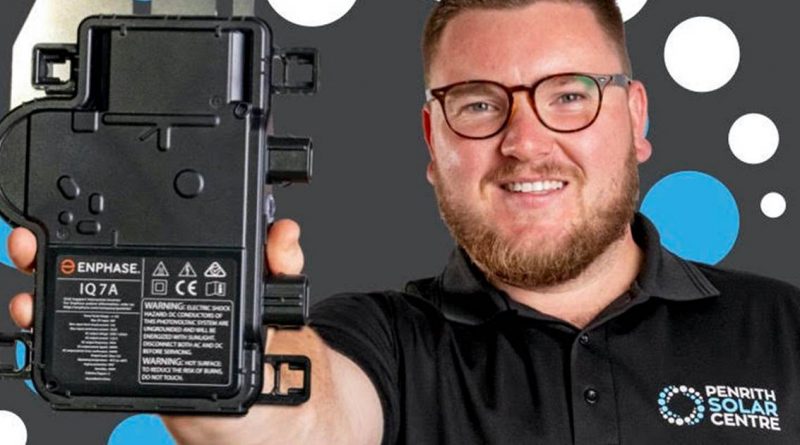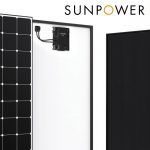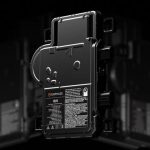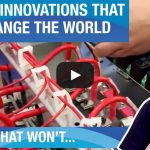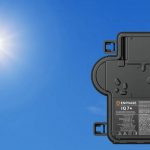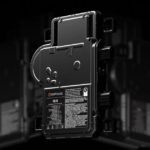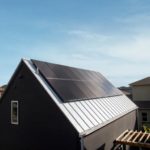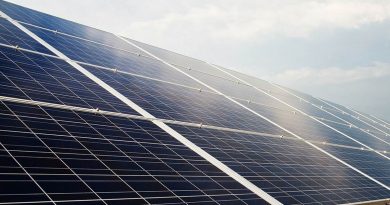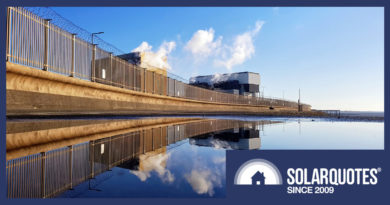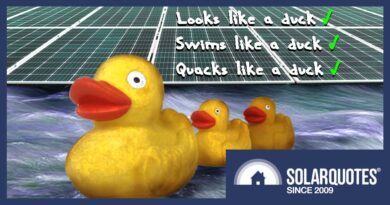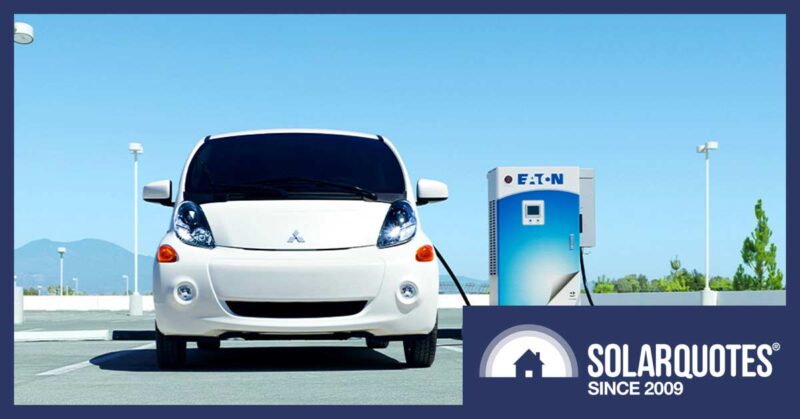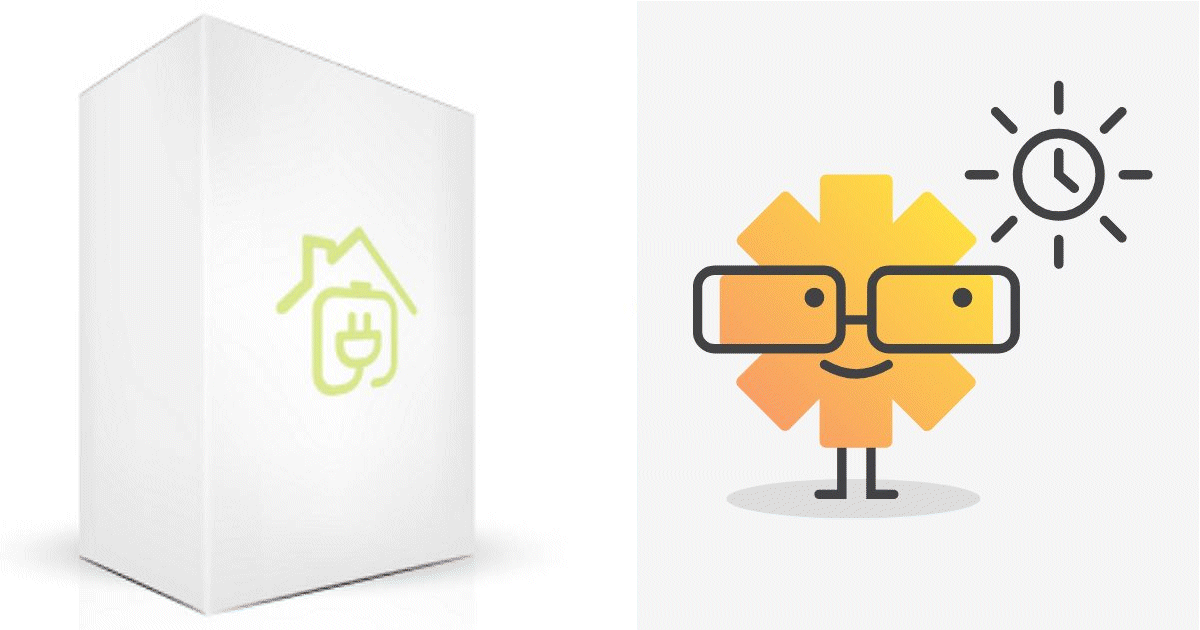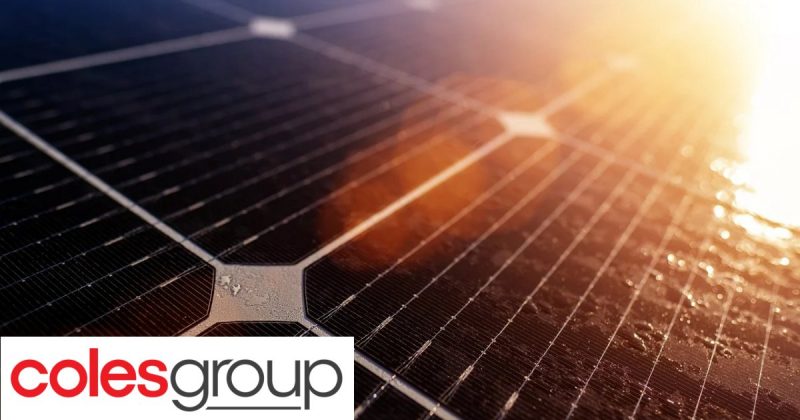Solar Installer Shuns String Inverters, Switches To Microinverters
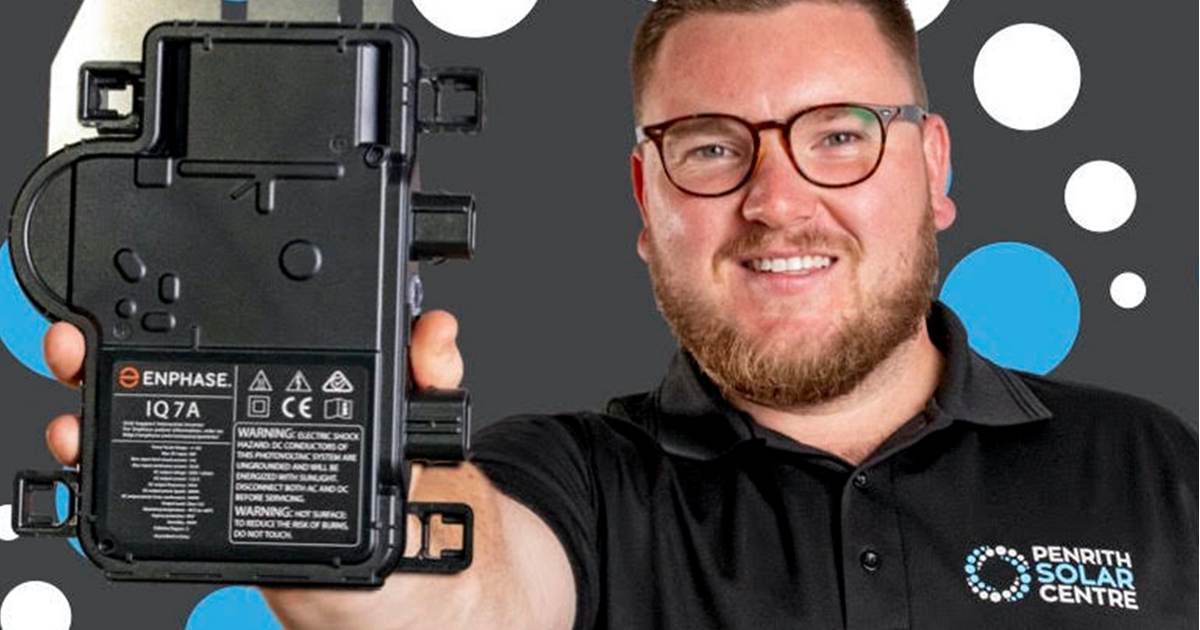
Penrith Solar Centre managing director Jake Warner with an Enphase microinverter
Citing safety, simplicity, support and performance reasons, NSW’s Penrith Solar has bid farewell to string inverters and is now only installing solar power systems with microinverters.
A solar inverter is the real workhorse of a solar power system – all the electricity generated by the system’s solar panels is routed through this device that operates in often harsh conditions. It’s the component most likely to fail first in a solar power system and this is why special attention should be paid to inverter selection.
Most inverters installed in Australia for home solar installations are string inverters – named so as strings of solar panels connect to them; usually one per system installation. An alternative is the microinverter, which is around the size of a paperback book. One is used with each solar panel, installed on the mounting system rail beneath it. “AC solar panels” have the microinverter integrated on the back of the panel at the factory.
Among the advantages of microinverters is they optimise each panel individually. In a string inverter situation, one shaded solar panel can cause a drop in performance of all panels in that string. Using microinverters, only the shaded panel’s performance is affected.
Another benefit is microinverters convert DC power at the point of generation – the panel – into AC power, meaning high-voltage DC cables don’t need to be run through the roof, plus they don’t require rooftop DC isolators1. Their use also allows for monitoring of each solar panel’s performance.
The Decision To Switch To Microinverters
Penrith Solar Centre services the Western Sydney and Blue Mountains region. After a review of operations the company decided to ditch string inverters altogether and use Enphase microinverters exclusively, which is the leader in the technology.
Among various reasons the decision was made, Penrith Solar Centre founder and managing director Jake Warner says he discovered after going through in-house records that microinverters were eight times less likely to fail than string inverters – meaning eight times less costly to support.
Mr. Warner says due to their small size, microinverters are also easier to store, transport and install. Additionally, it makes inventory control much simpler.
“We’ve already ordered 7500 microinverters for quarter two this year,” he said. “If I was ordering string inverters, I would have to break that down into 5 kilowatt (kW), 6kW, 7kW, 8kW, 10kW, 12kW and 15kW inverters whereas now I literally order just one microinverter for each solar panel on order.
Mr. Warner noted other major benefits of their use include better performance in hotter conditions, simplifying system design and improved remote diagnosis of system issues.
Value Vs. Cost
There’s a lot to like about microinverters, but one of the disadvantages is they will add 20 – 25% on to the cost of a solar power system installation. But Mr. Warner says:
“The reality is that if string inverters and microinverters were exactly the same price, no one would ever buy a string inverter.”
String inverter manufacturers might have a bit to say about that, but microinverters are worth considering particularly if you have a partial shading scenario and/or your budget allows. Another option is the use of power optimisers, which still require a string inverter installation.
Related: learn more about panel level optimisation (PLO).
Original Source: https://www.solarquotes.com.au/blog/installer-string-micro-inverter-mb1956/

